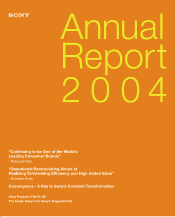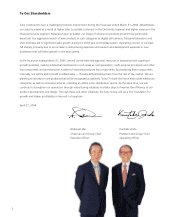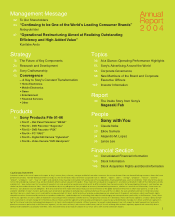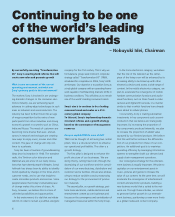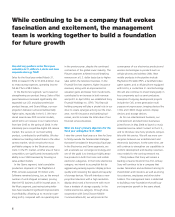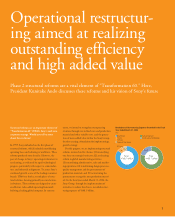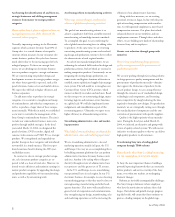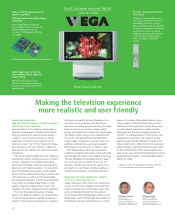Sony 2004 Annual Report Download - page 9
Download and view the complete annual report
Please find page 9 of the 2004 Sony annual report below. You can navigate through the pages in the report by either clicking on the pages listed below, or by using the keyword search tool below to find specific information within the annual report.
77
Phase 2 structural reforms are a vital element of “Transformation 60.” Here,
President Kunitake Ando discusses these reforms and his vision of Sony’s future
Operational restructur-
ing aimed at realizing
outstanding efficiency
and high added value
Total:
¥168.1 billion
None of the above
Total:
¥168.1 billion
Pictures
Music
Electronics
Asset sales and disposals
Early retirement
85.2
6.4 5.7
2.7
79.4
20.6
Breakdown of Restructuring Expenses Recorded in the Fiscal
Year Ended March 31, 2004
(%)
Structural reforms are an important element of
“Transformation 60” (TR60), Sony’s mid-term
corporate strategy. Would you tell us more
about these reforms?
In 1999, Sony embarked on the first phase of
structural reforms, which included consolidating
operating bases and reducing its workforce. These
reforms produced some benefits. However, the
pace of change in Sony’s operating environment is
accelerating, as evidenced by rapid technological
progress, particularly with respect to semiconduc-
tors, and industrial realignment. To assure Sony’s
continued growth as one of the leading consumer
brands, TR60 sets forth a second phase of struc-
tural reforms, focusing primarily on our electron-
ics business. These reforms are designed to create
an efficient, value-added operating framework
befitting a leading global company. In concrete
terms, we intend to strengthen our operating
structure through cuts in fixed costs and production
material and other variable costs, and the genera-
tion of more added value within the Sony Group,
thereby creating a foundation for implementing a
growth strategy.
For this purpose, we are implementing structural
reforms centered on five themes: (1) intensifying
our focus on strategic businesses; (2) accelerating
reform in global manufacturing activities;
(3) streamlining administrative, sales and market-
ing operations; (4) transforming design processes,
quality management and the procurement of
production materials; and (5) restructuring the
procurement strategy for non-production materi-
als. In the fiscal year ended March 31, 2004, the
Sony Group, through the implementation of
initiatives to reduce fixed costs, recorded restruc-
turing expenses of ¥168.1 billion.
7

